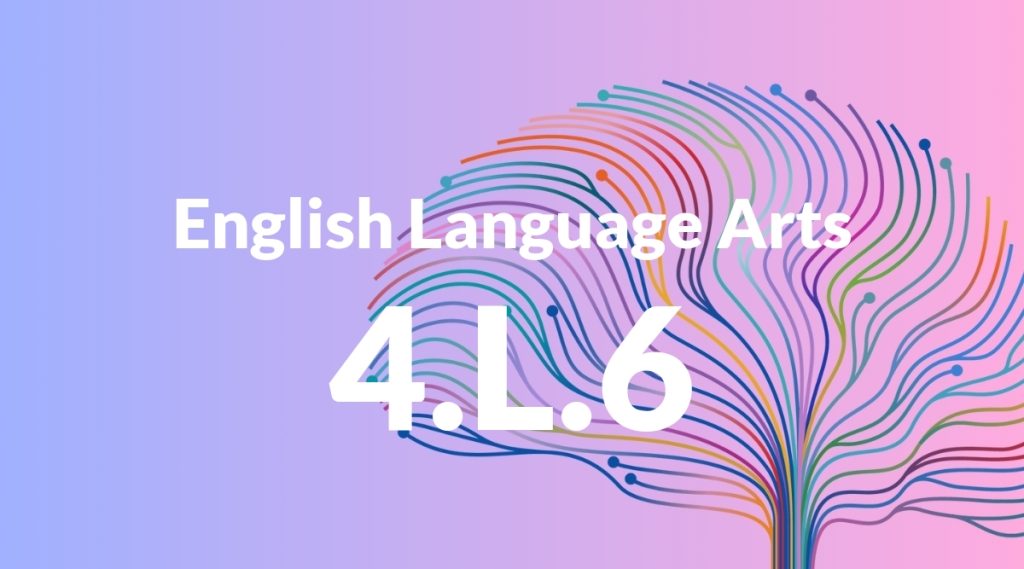Standard: 4.L.6 – Acquire and use accurately grade-appropriate general academic and domain-specific words and phrases, including those that signal precise actions, emotions, or states of being (e.g., quizzed, whined, stammered) and that are basic to a particular topic (e.g., wildlife, conservation, and endangered when discussing animal preservation).
Grade level: Grade 4
Subject: English Language Arts
Domain: Language
Teacher Overview
This standard focuses on helping students acquire and use grade-appropriate vocabulary accurately. It is essential because a robust vocabulary enhances reading comprehension, writing, and communication skills, which are crucial for academic success across all subjects. Ensure students have a strong foundation in basic vocabulary and can use context clues to infer the meanings of unfamiliar words.
Students will be able to use a more sophisticated vocabulary in their writing and speaking, improving their ability to express complex ideas clearly and effectively.
Common Misconception 1
Some students may think that vocabulary learning is only relevant to English Language Arts classes. This is incorrect because a strong vocabulary is essential for understanding and communicating complex ideas in all subjects, including science, social studies, and math.
Intervention 1
Integrate vocabulary learning into various subjects by highlighting domain-specific terms and encouraging students to use them in context.
Common Misconception 2
Another common misconception is that using more sophisticated words is always better. However, using complex vocabulary without understanding can lead to confusion and miscommunication. It is more important to use words that are appropriate for the context and audience.
Intervention 2
Encourage students to consider their audience and the context when choosing words. Provide practice with varying sentence structures and word choices to enhance clarity and effectiveness.
Prerequisite Knowledge
Students should have a basic understanding of common vocabulary and the ability to identify parts of speech such as nouns, verbs, and adjectives. They should also be familiar with context clues to infer the meaning of unknown words.
Subsequent Knowledge
After mastering this standard, students will be able to enhance their writing and speaking with more sophisticated vocabulary. They will also improve their reading comprehension as they encounter more complex texts.
Instructional Activities
- Vocabulary journals to track new words and their meanings.
- Context clue exercises to infer the meanings of unknown words.
- Writing prompts that require the use of specific vocabulary.
- Group discussions using newly acquired vocabulary.




